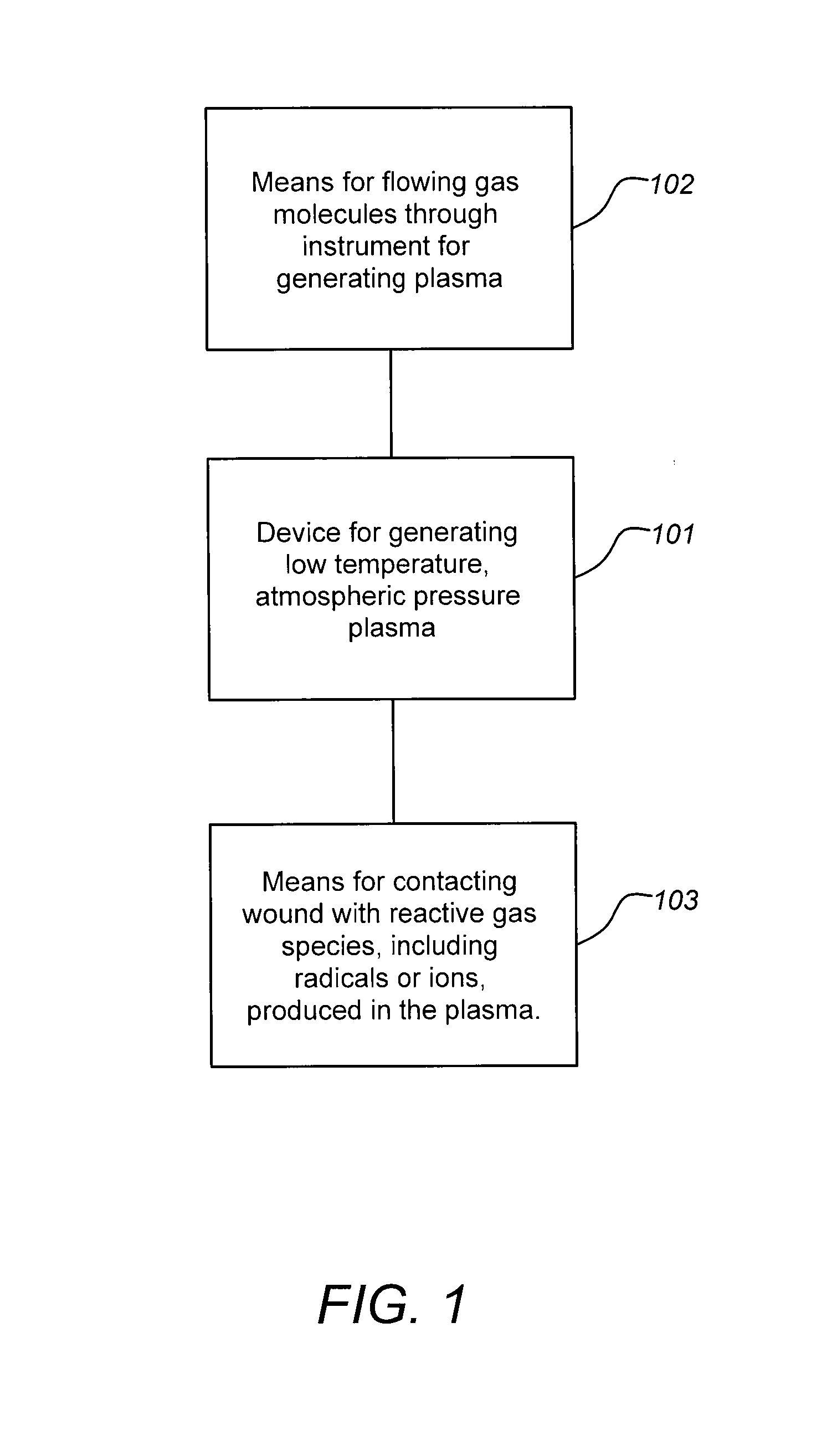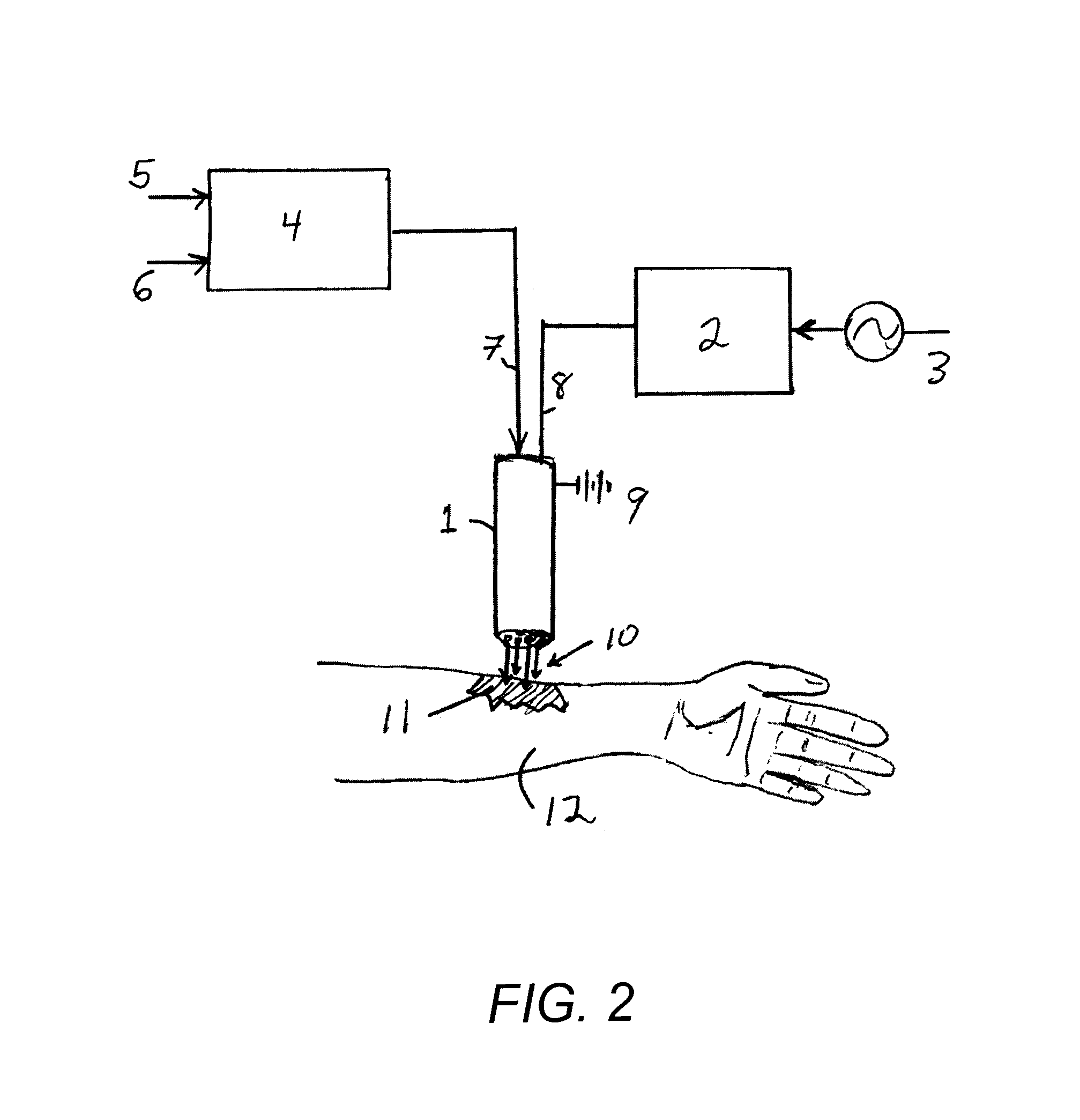Wound treatment apparatus and method
a wound treatment and wound technology, applied in the field of wound treatment apparatus and method, can solve the problems of prolonged treatment process, high risk of infection in skin ulcers, amputation and even death, etc., and achieve the effect of promoting the healing of damaged tissu
- Summary
- Abstract
- Description
- Claims
- Application Information
AI Technical Summary
Benefits of technology
Problems solved by technology
Method used
Image
Examples
Embodiment Construction
[0041]In the following description including the preferred embodiment, reference is made to the accompanying drawings, which form a part hereof, and in which is shown by way of illustration a specific embodiment in which the invention may be practiced. It is to be understood that other embodiments may be utilized and structural changes may be made without departing from the scope of the present invention.
1.0 Overview
[0042]FIG. 1 shows a block diagram of an exemplary embodiment of the present invention. The apparatus comprises an instrument 101 for generating a low temperature, atmospheric pressure plasma coupled to a means 102 for flowing gas containing molecules through the instrument 101, and a means 103 of contacting the wound with the reactive gas species generated in the plasma. For the purposes of the present invention reactive gas species include, but are not limited to, radicals, ions, ground-state atoms, or metastable molecules. The instrument for generating the low tempera...
PUM
 Login to View More
Login to View More Abstract
Description
Claims
Application Information
 Login to View More
Login to View More - R&D
- Intellectual Property
- Life Sciences
- Materials
- Tech Scout
- Unparalleled Data Quality
- Higher Quality Content
- 60% Fewer Hallucinations
Browse by: Latest US Patents, China's latest patents, Technical Efficacy Thesaurus, Application Domain, Technology Topic, Popular Technical Reports.
© 2025 PatSnap. All rights reserved.Legal|Privacy policy|Modern Slavery Act Transparency Statement|Sitemap|About US| Contact US: help@patsnap.com



